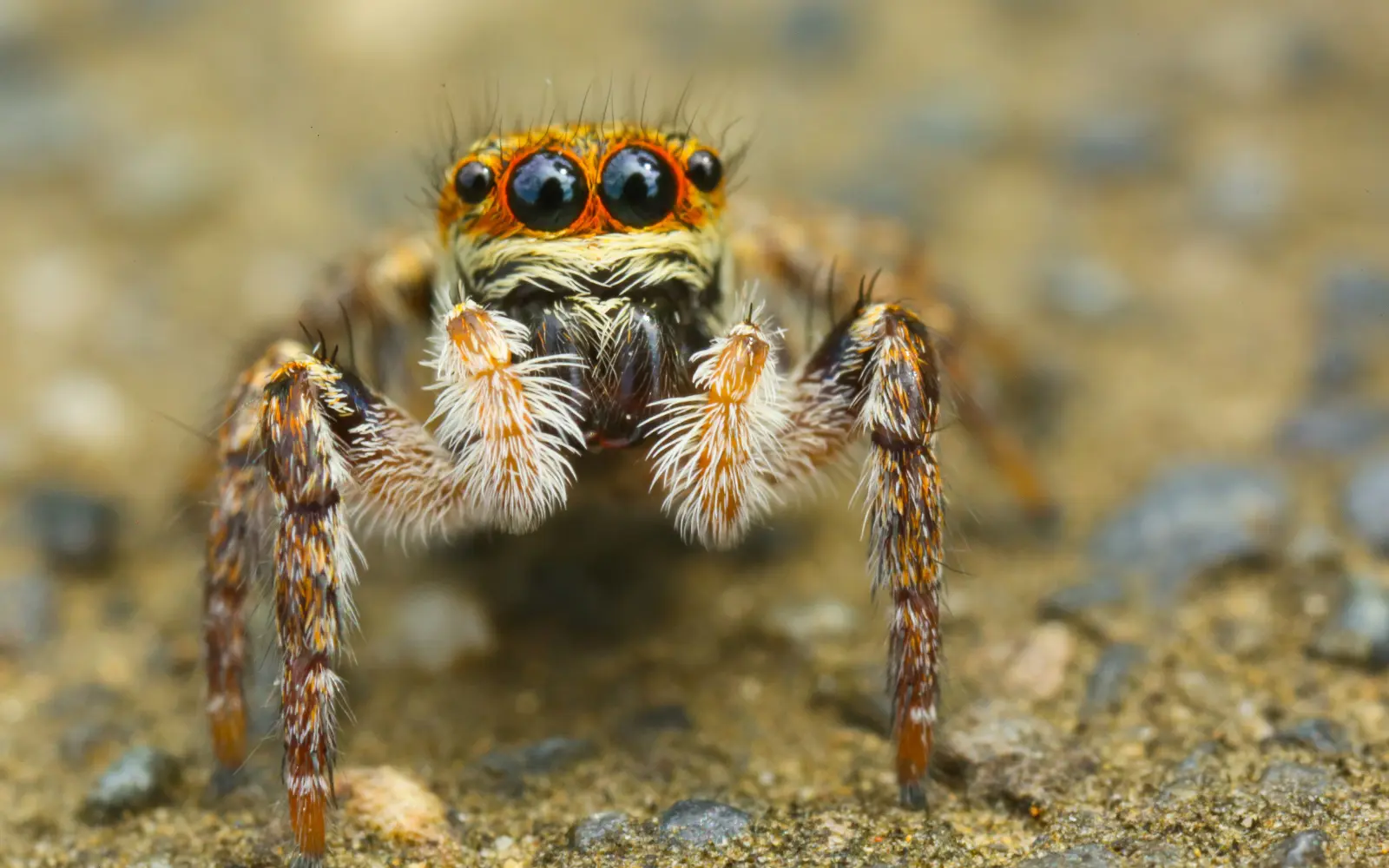Jumping Spider Camouflage Strategies

Jumping spiders, those agile hunters of the arachnid world, don’t just rely on their impressive leaps and keen vision for survival. Many species have evolved remarkable camouflage strategies that help them blend seamlessly into their surroundings. Let’s uncover the intriguing world of jumping spider camouflage:
Intricate Coloration and Patterns
Jumping spiders exhibit a diverse range of color patterns that aid in their camouflage:
- Resembling the Environment: Some species have evolved colorations that match the colors of the surfaces in their habitat, whether it’s the bark of a tree or the petals of a flower.
- Disruptive Coloration: Certain jumping spiders have patterns that break up their outline, making them harder for predators to detect.
Behavioral Camouflage
Camouflage isn’t just about color; it’s also about behavior:
- Freeze and Blend: When a jumping spider senses danger, it may freeze in place, using its stillness and its resemblance to its surroundings to avoid detection.
- Swaying with the Wind: Some species sway gently with the wind, mimicking a leaf’s movement. This motion can help them disappear in plain sight.
Behaviour and Ecology
- How Do Jumping Spiders Communicate?
- Unveiling the Appetite of Jumping Spiders
- The Amazing Parental Care of Jumping Spiders
- Social Behaviour Among Jumping Spiders
- Jumping Spider Mimicry and The Art of Deception
- Courtship and Mating in Jumping Spiders
- Jumping Spider Hunting Techniques
- Behavioural Patterns of Jumping Spiders
3D Camouflage
Jumping spiders take their disguise to another level by using three-dimensional elements:
- Body Shape: Certain species have body shapes that resemble parts of plants, like thorns or leaves, further enhancing their camouflage.
- Adaptable Coloration: Some jumping spiders can change their coloration to match their environment. This flexibility helps them stay hidden as they move around.
Hunting Ambush
Camouflage isn’t just for avoiding predators; it’s also a hunting strategy. Jumping spiders use camouflage as a hunting strategy in the following ways:
- Ambushing Prey: Some jumping spiders have the ability to blend in with their surroundings, allowing them to surprise unsuspecting prey. They sit camouflaged seamlessly on tree barks, waiting for their prey to come within striking distance.
- Mimicking Ants: The colorful jumping spider species Siler collingwoodi mimics the walk of an ant to evade predators. They scuttle around like ants, raise their front legs to mimic an ant’s antennae, bob their abdomens, and lift their legs to walk more ant-like. This mimicry helps them avoid being detected by predators and allows them to get closer to their prey without being noticed.
It’s important to note that while camouflage can be an effective hunting strategy, it is not foolproof. Some predators may still be able to detect and capture camouflaged jumping spiders
Conclusion
Jumping spiders are not only agile predators but also masters of disguise. Their intricate coloration, behavioral adaptations, and three-dimensional strategies allow them to vanish into their surroundings, whether it’s for avoiding predators or ambushing prey. These techniques add yet another layer of complexity to the already fascinating world of these remarkable arachnids.
